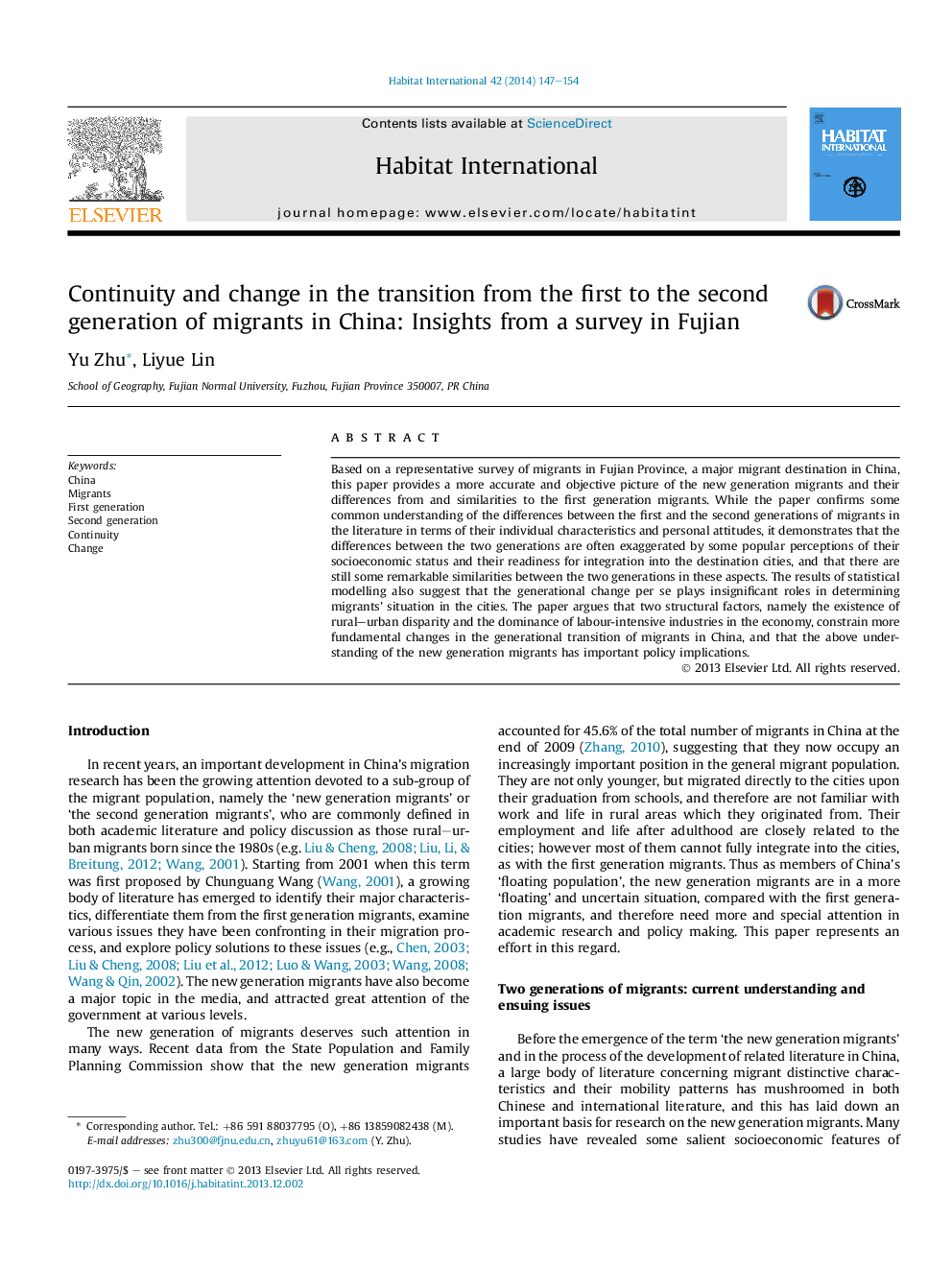| Article ID | Journal | Published Year | Pages | File Type |
|---|---|---|---|---|
| 1047969 | Habitat International | 2014 | 8 Pages |
•The new generation migrants are significantly different from the first generation ones in their individual characteristics.•However, they are still remarkable similar in their socioeconomic status and readiness for integration into the cities.•The generational change per se plays an insignificant role in changing migrants' situation in the cities.•Rural–urban disparity and the dominance of labour-intensive industries constrain the above changes.
Based on a representative survey of migrants in Fujian Province, a major migrant destination in China, this paper provides a more accurate and objective picture of the new generation migrants and their differences from and similarities to the first generation migrants. While the paper confirms some common understanding of the differences between the first and the second generations of migrants in the literature in terms of their individual characteristics and personal attitudes, it demonstrates that the differences between the two generations are often exaggerated by some popular perceptions of their socioeconomic status and their readiness for integration into the destination cities, and that there are still some remarkable similarities between the two generations in these aspects. The results of statistical modelling also suggest that the generational change per se plays insignificant roles in determining migrants' situation in the cities. The paper argues that two structural factors, namely the existence of rural–urban disparity and the dominance of labour-intensive industries in the economy, constrain more fundamental changes in the generational transition of migrants in China, and that the above understanding of the new generation migrants has important policy implications.
